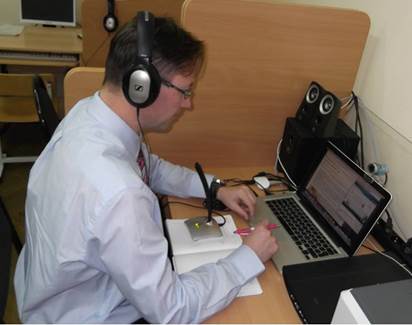Keywords:
competence
electronic information-educational environment
semiotics
inter-paradigmatic-semiotic approach. |
Abstract: the article substantiates the actuality of forming up the competence model of electronic information-educational environments (EIEE) on base of conflict resolution between the current requirements of educational standards and the real conditions and outcomes of educational process. The comparative analysis of various representations of the EIEE concept in normative documents including educational standards, professional standard, federal legislation are presented in the article. The article describes a special approach to building up the EIEE model on the basis of gen-eral idea of professional ICT competence (consisting of common user ICT competency, general pedagogical ICT competency and subject-pedagogical ICT competency) and presents trans-paradigm-semiotic concept of EIEE. Within the frames of a given concept the electronic infor-mation-educational environments are rendered as a paradigm context of interacting subject. The ap-proach suggested by the author is a frame one and is revealed via introduction of the following competency classes: design-organizational, reflexive-monitoring, subject-content-methodological, and semiotic-communicational. The EIEE analysis is made on the semiotic level of the sign interac-tions and designated subjects, and also on the formal-constructive level of the alphabet, words, and language. The EIEE includes various interactions of semiotic level such as stigmergic interactions, reflecting feedback connections, emerging as the side-effect of communicative processes in elec-tronic information-educational environments. The article will be of interest for the educational methodologists, specialists in the field of electronic learning and designing the information-educational environments, and for teachers of computer science.
|
1.Golicyna I. N. Formirovanie professionalnyh kompetencii IT-specialistov v ehlektronnoi informacionno-obrazovatelnoi srede// Obrazovatelnye tekhnologii i obshchestvo. 2015 T. 18 N 4 S 744-752
2. Sharonova O. V. Nikolaev M. V. Profil IKT-kompetentnosti sovremennogo pedagoga// Informatika i obrazovanie 2015. N 8 (267) S 4-7
3. Zaharova T. B. Razvitie IKT-kompetentnosti pedagoga kak neobhodimoe uslovie povysheniya kachestva obrazovatelnogo processa// Informatika i obrazovanie. 2015. N 8 (267) S 7-10
4. Gosudarev I. B. Mezhparadigmalno-semioticheskaya koncepciya ehlektronnyh informacionno-obrazovatelnyh sred// Obrazovatelnye tekhnologii i obshchestvo. 2015. N 18 4 S 730-737
5. Kolesnikova I. A. Pedagogicheskaya realnost: opyt mezhparadigmalnoi refleksii/ I. A. Kolesnikova. - SPb 2001
6. Stigmergiya v obrazovanii na platforme veb i telekommunikacionnyh sistem// Sovremennoe obrazovanie: tradicii i innovacii. -2015 - 2 -S 69-75












